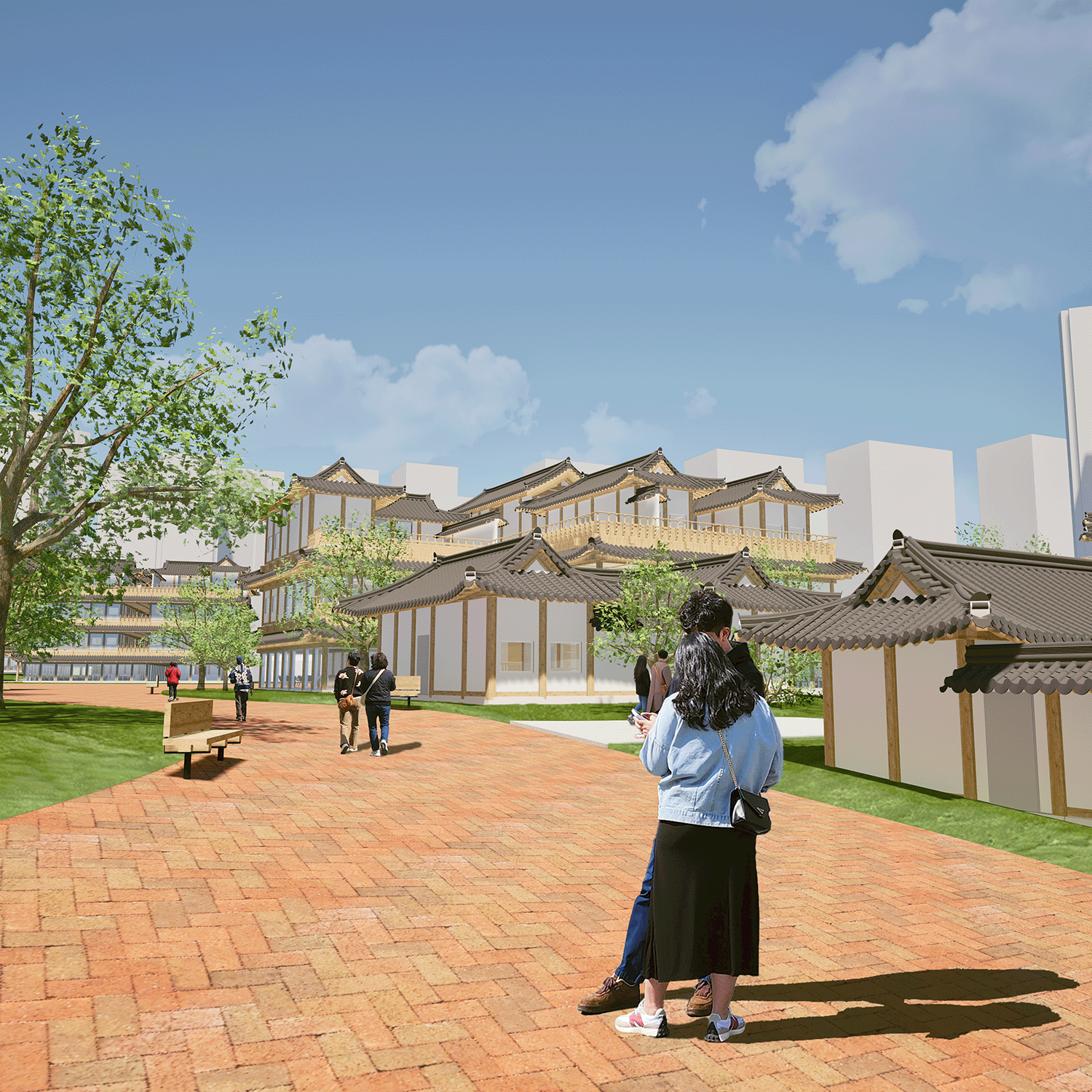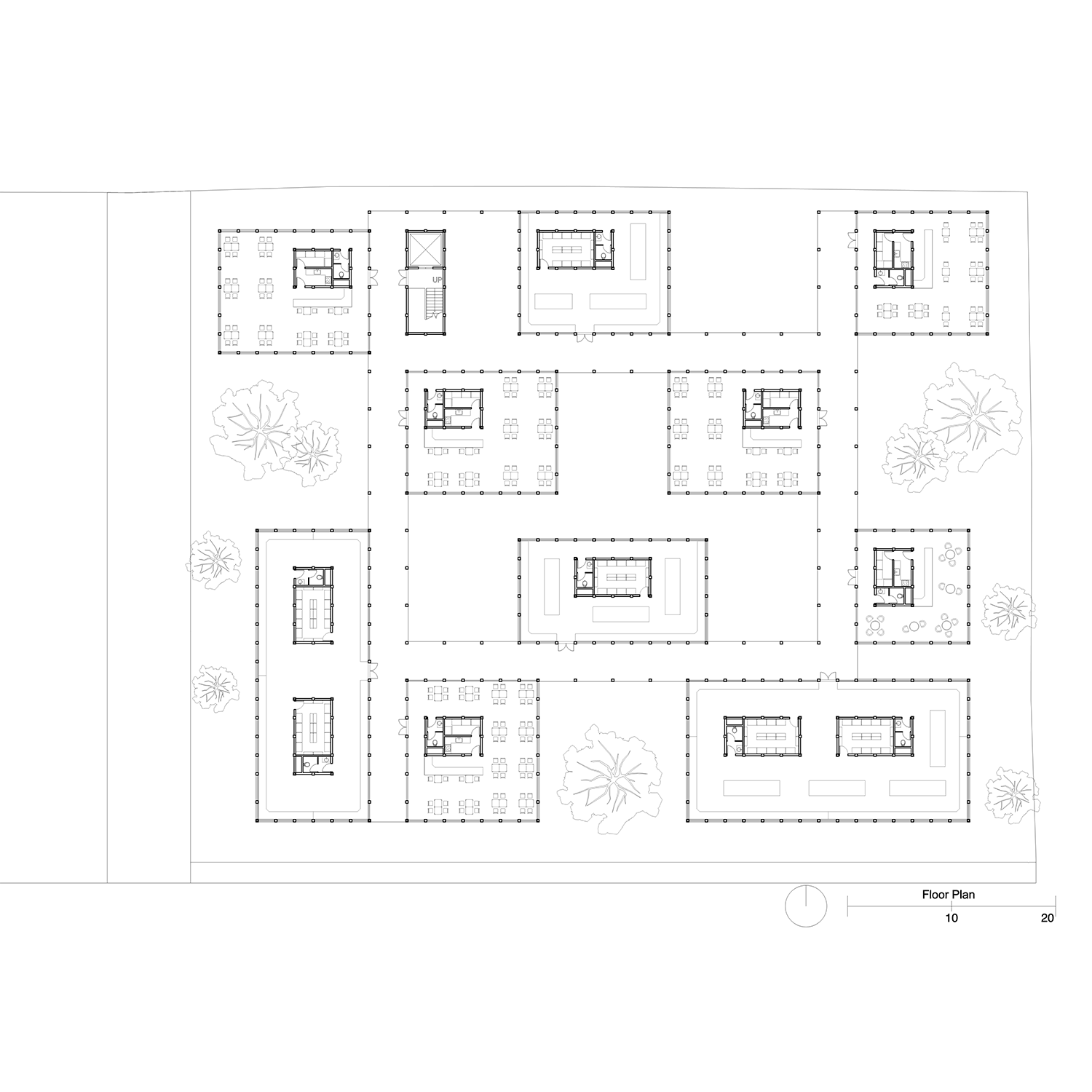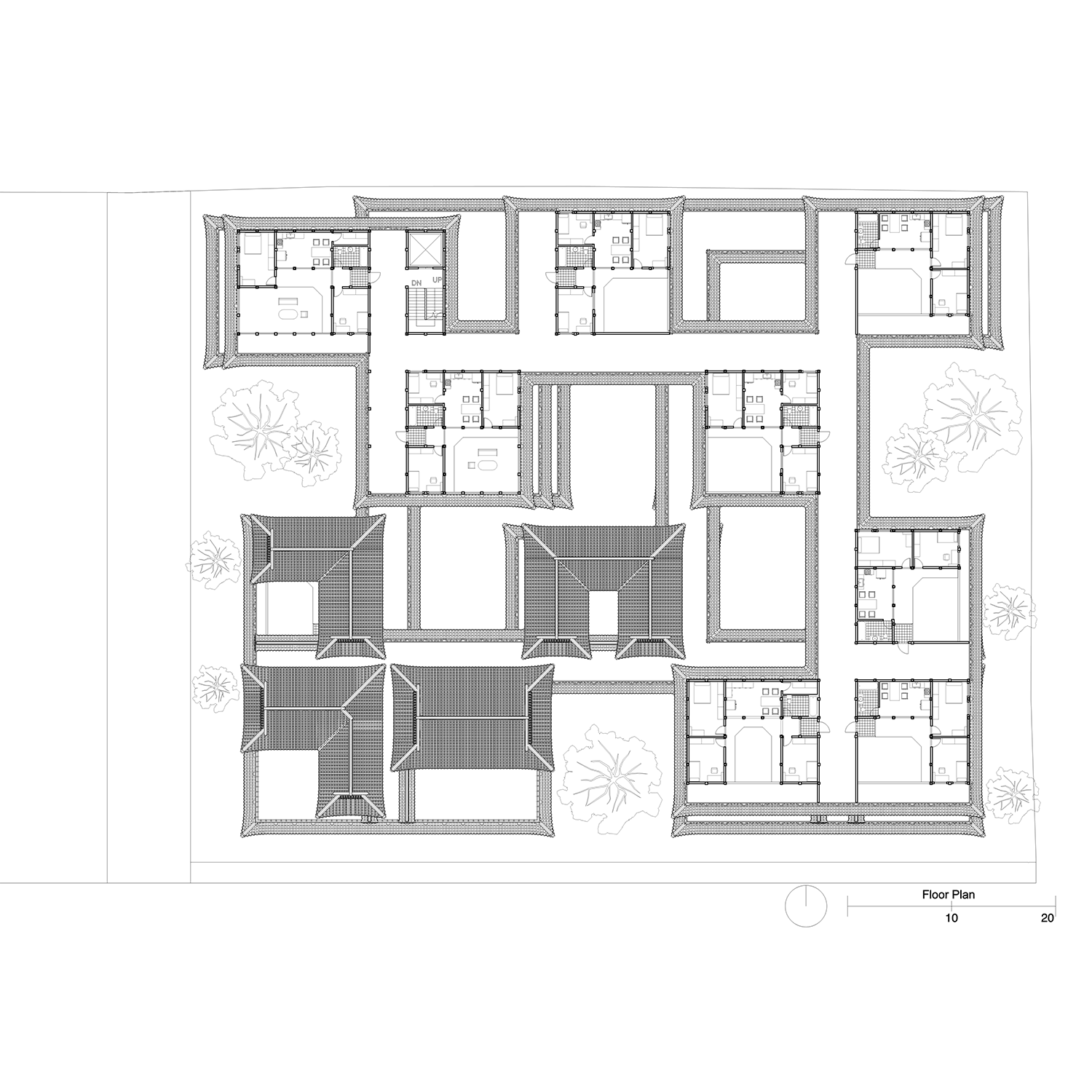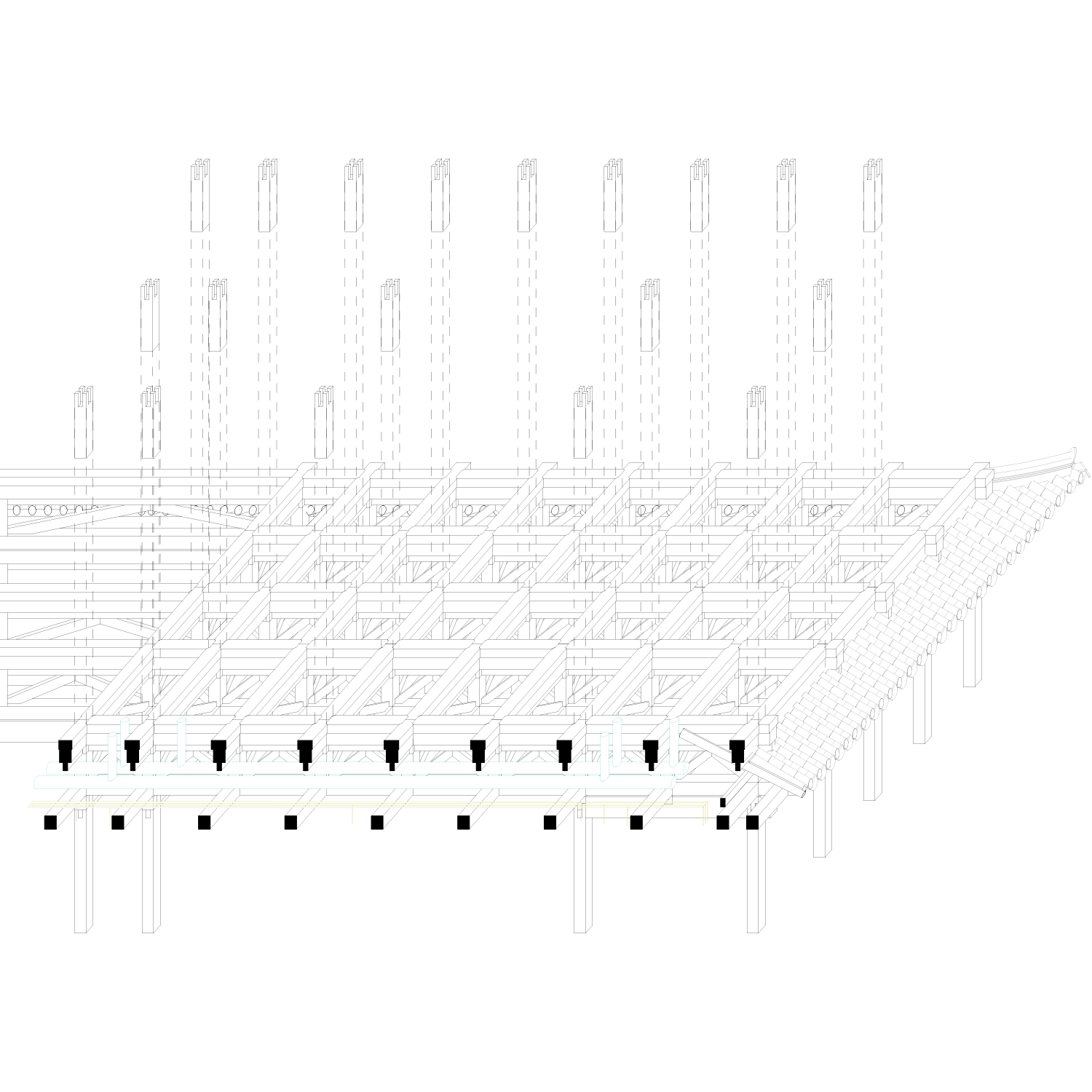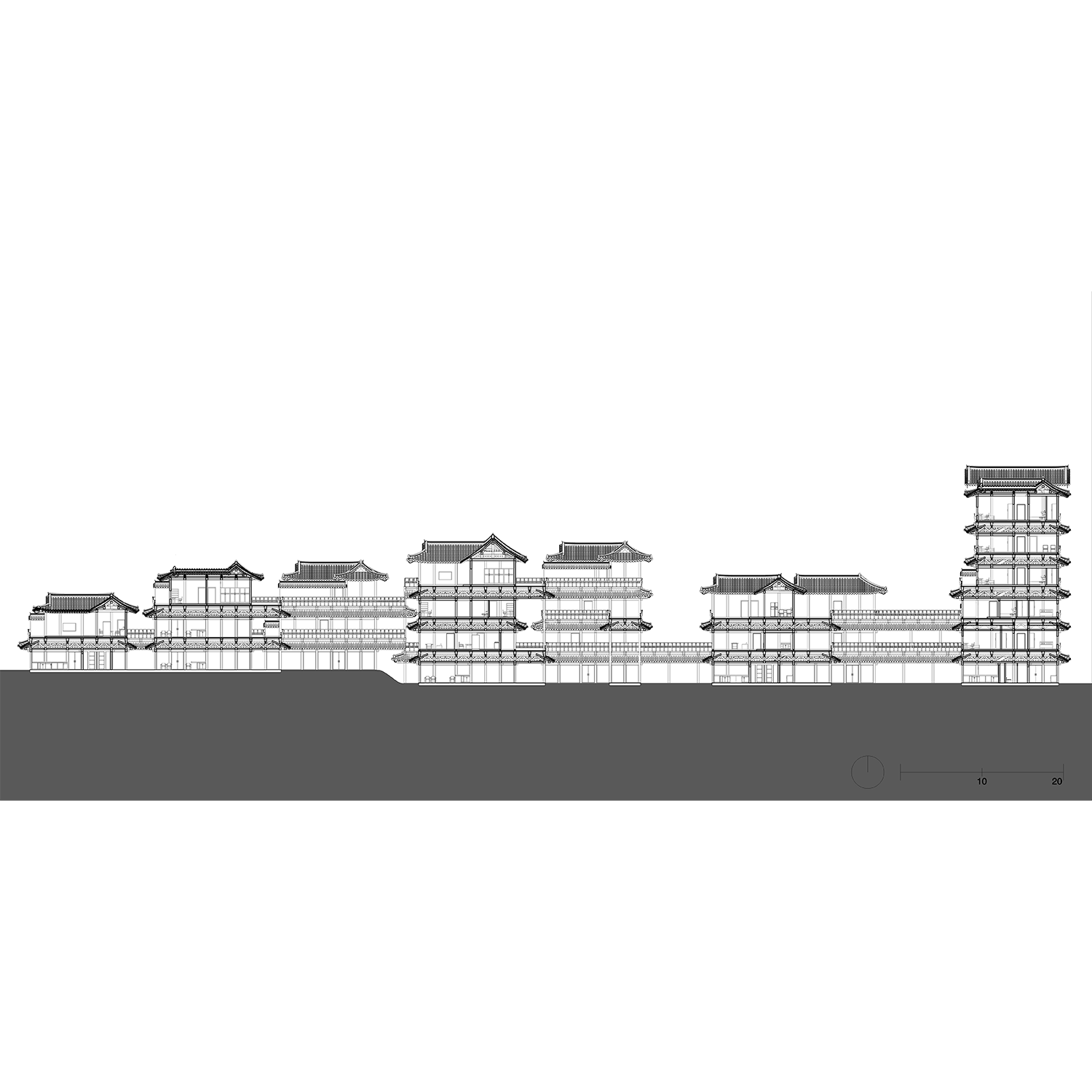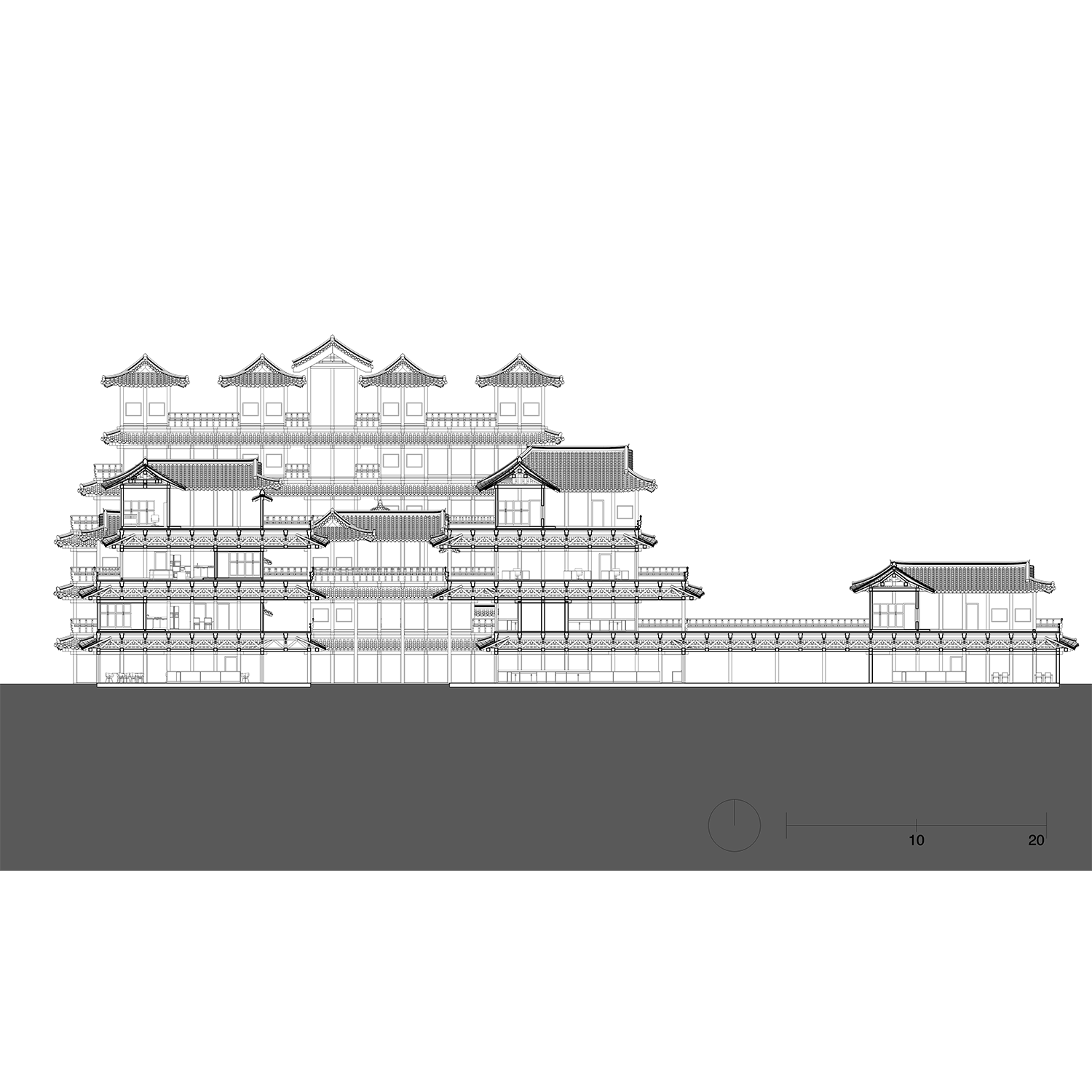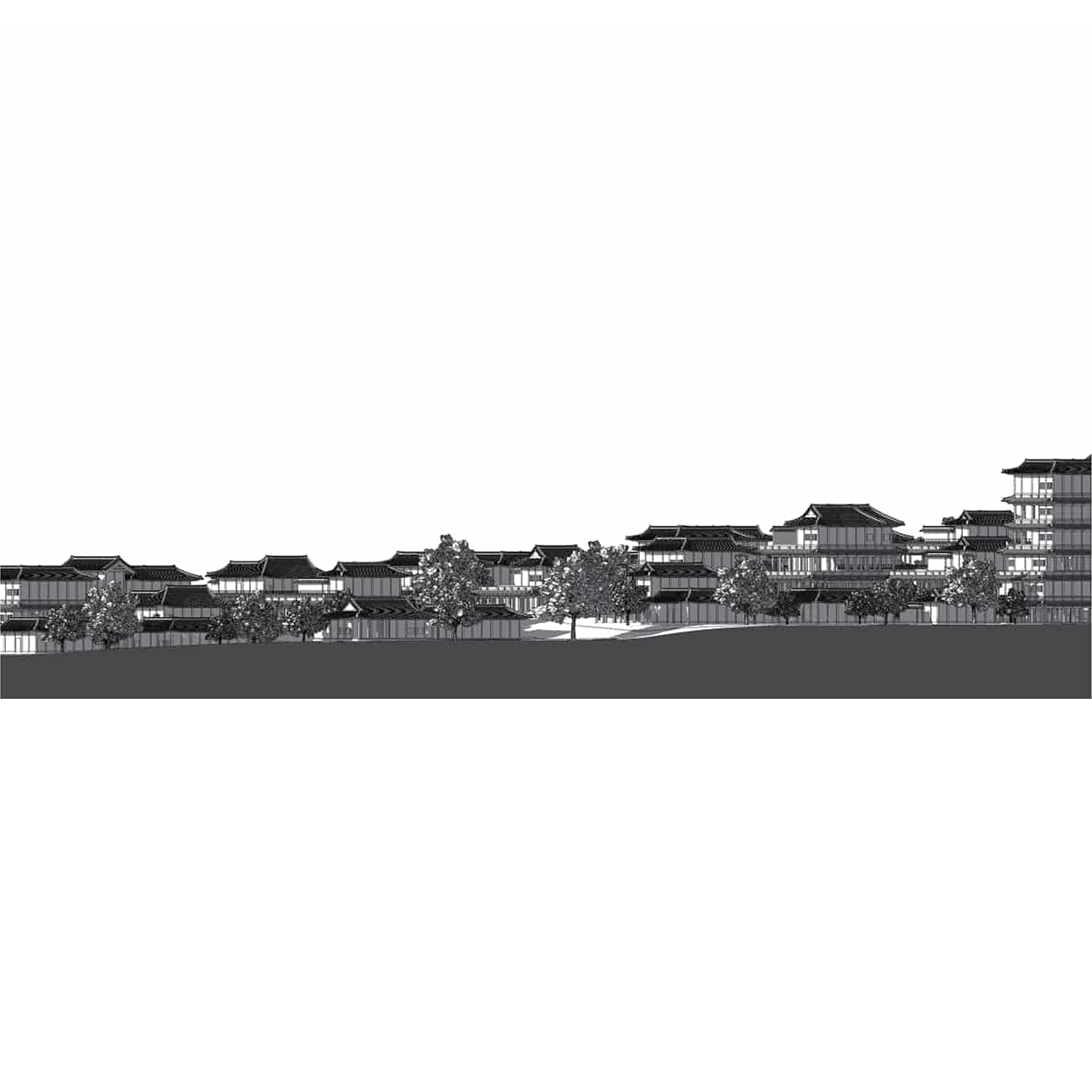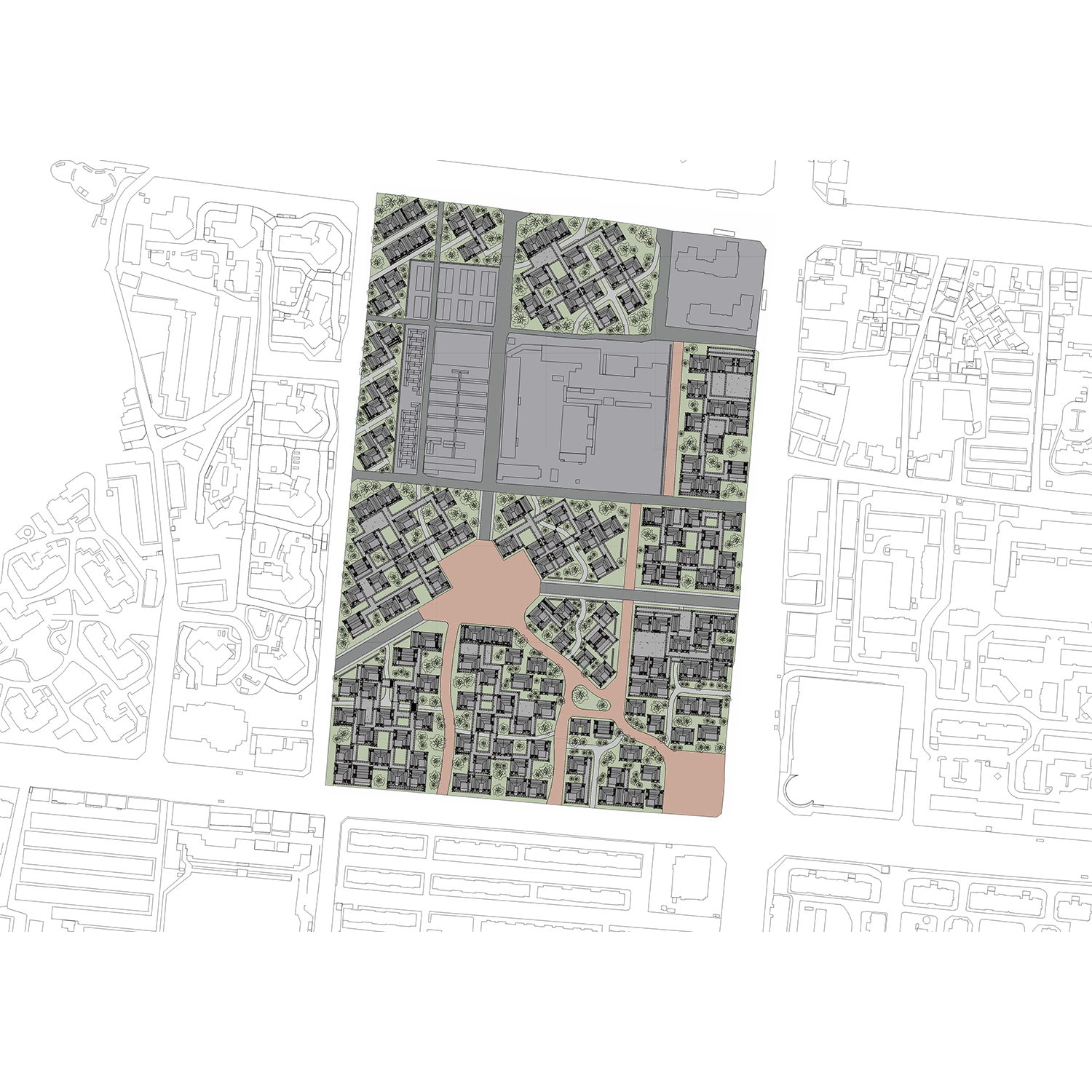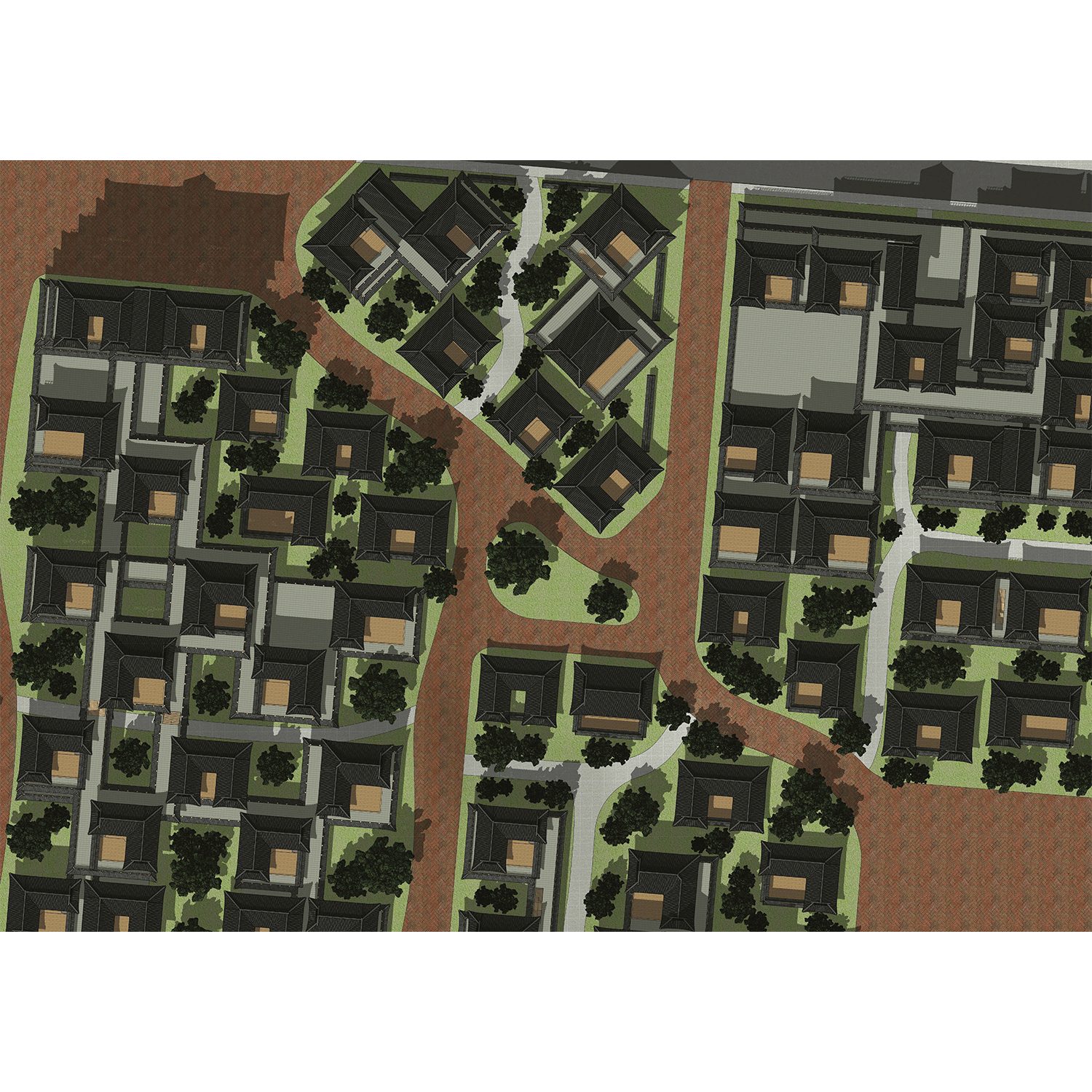송준혁 _ 멸종위기장(場) 보호구역 - 백마장 한옥마을
차를 타고 서울을 벗어나 지방 도시에 도착했을 때, 낯선 듯 익숙한 풍경에 맞닥뜨린 적이 있을
것이다. 충주든 전주든, 도시 지역은 대형 아파트 단지와 프랜차이즈 상점으로 가득 차 있다. 지역
고유의 정체성은 희미해지고, 서울의 일부를 복제한 듯한 도시에 우리는 서 있다. 이처럼 도시의
획일화는 장소정체성의 위기를 야기한다.
장소정체성의 위기는 평상시에는 드러나지 않지만, 도시가 산업 생태계나 교통 환경 등의 변화로
쇠퇴 상황에 직면할 때 수면 위로 떠오른다. 정체성을 잃은 도시는 이러한 변화에 저항하지 못하고
쇠퇴가 가속화되지만, 장소정체성을 확보한 도시는 쇠퇴에 대응하며 오히려 이를 극복할 수 있다.
따라서 장소정체성 위기에 대응하는 것은 도시를 지키는 선제적이자 적극적인 조치이다. 본
프로젝트는 이와 같은 문제의식에서 출발한다.
프로젝트의 대상지는 인천 부평구 산곡동 87번지이다. 과거 이곳은 조선 유일의 한옥형 영단주택
단지로, 일제강점기 일본군 조병창 노동자들을 위한 주거지였다. 그러나 2023년 재개발로 완전히
철거되며, 장소가 지닌 역사적 층위와 도시정체성도 함께 사라졌다. 지역의 장소성을 살리고자,
현재의 조건에 맞게 해석한 현대 한옥 주상복합 단지를 제안한다.
한옥은 과거 부지에 실제로 존재했던 건축 유형이자, 장소정체성을 회복하는 데 유효한 건축
언어이다. 나는 한옥을 하나의 본질적 요소로 정의하는 대신, 목구조와 마당 중심 평면 등 다양한 전통
요소가 유기적으로 구성된 복합 체계를 마련했다. 이를 바탕으로, 한옥의 물리적 특성인 기둥과 보,
곡선 처마, 마당 중심의 평면 구성을 유지하면서, 고층화와 고밀화를 수용할 수 있도록 전통 목탑의
평좌층 개념을 현대적으로 차용했다. 각 층은 구조적 독립성을 갖추되 구조, 공간, 설비가 유기적으로
통합되며, 반복된 적층을 통해 새로운 도시 구조가 형성된다.
이 단지는 시민들이 답답한 도시 속에서 잠시 숨 쉴 수 있는 허파이자, 부평이라는 도시가 쇠퇴하지
않도록 지탱하는 다리가 될 것이다.
If you've ever driven out of Seoul and arrived in a provincial city, you've probably encountered a vaguely familiar landscape. Whether it's Chungju or Jeonju, the urban areas are filled with large apartment complexes and franchise stores. The local identity has faded, and we stand in a city that looks like a replica of Seoul. This homogenization of cities creates a crisis of placeness.
The crisis of placeness is not usually visible, but it comes to the surface when a city faces decline due to changes in its industrial ecosystem or transportation environment. Cities that have lost their identity are unable to resist these changes and decline accelerates, but cities with a strong sense of place are able to respond to decline and even overcome it. Responding to the crisis of placeness is therefore a proactive measure to protect cities from delining. This project is based on this idea.
The project is located at 87 Sangok-dong, Bupyeong-gu, Incheon. In the past, it was the only hanok-type Yeongdan housings, public housing complex of Korea in Japanese colonial period, and were used as residence for workers at japanese weapon factory during the Japanese occupation. However, when it was completely demolished in 2023 for redevelopment, the historical layer and urban identity of the place disappeared. In order to revitalize the area's placeness, I propose a modern hanok residential complex that is interpreted according to current conditions.
Hanok is an architectural type that actually existed on the site in the past, and it is an architectural language that can be used to restore the sense of place. Instead of defining the hanok as a single essential element, I have created a composite system that is organically composed of various traditional elements such as wooden structure and Madang-centered plan. Based on this, I retained the hanok's physical characteristics of columns and beams, curved eaves, and Madang-centered floor plan, while borrowing the modern concept of multi-floors from traditional wooden towers to accommodate gentrification and densification. Each floor has structural independence, but the structure, space, and facilities are organically integrated, and a new urban structure is formed through repeated stacking.
The complex will be a breathing space for citizens to breathe in the stuffy city, and a bridge to support the city of Bupyeong from declining.
